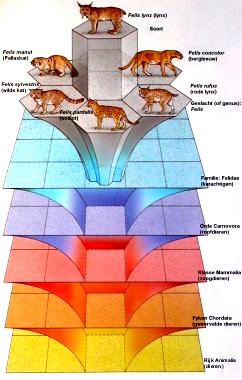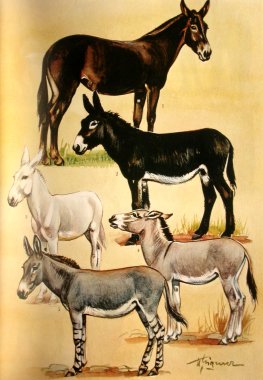
After Whitfield: De evolutie van het leven
(1994)

After Gzrimeks Tierleben Band 12 (1972)
Mayr says: A species is a group of populations which are capable of interbreeding with fertile offspring.
It is a bit strange reading about populations instead of individual plants and animals. This is because populations (local groups of plants and animals) play such an important role in the formation of new species.
Have a look at the diagram above. A lynx is a species of the genus Felis (cat-like animals). Members of a genus are related species such as the wild cat, the lynx, the red lynx, the mountain lion and the ocelot. Why do these species belong to the same genus and why do they have common characteristics? Because they descend from a common ancestor. In this way groups of related genera have also a commnon ancestor (further back in time). Together they form a family, in this case the family of the cat-like animals (felines).
This can be continued: order, class, phylum, kingdom.
Know more?
Species (complete
but not easy)
Often interbreeding between two species is quite impossible, and if there is offspring, the bastard is in most cases infertile. The reason is that the chromosomes do not fit together. The closer the species are related, the greater the chance that they can get bastards.
In the picture above the uppermost animal is a mule, the other ones are donkeys.
Reproductive barriers can have very different forms. Often there is the physical impossibility to mate (elephant and mouse). Different mating behaviour is a very common barrier, especially in birds. If there is effective mating, it is possible that there is simply no fertilization, or if there is, that the fertilized ovule does not develop. And there is of course the case of the unfertile bastard, like in the horse and the donkey.